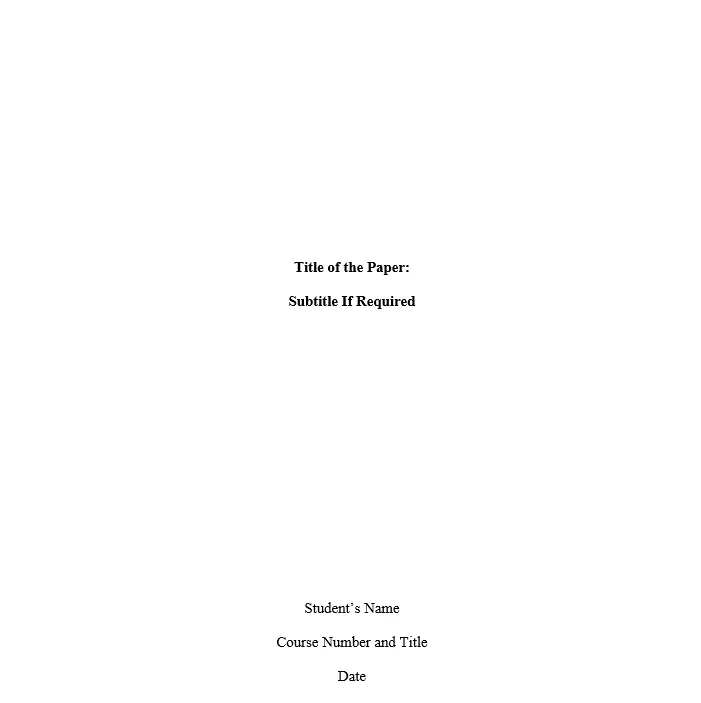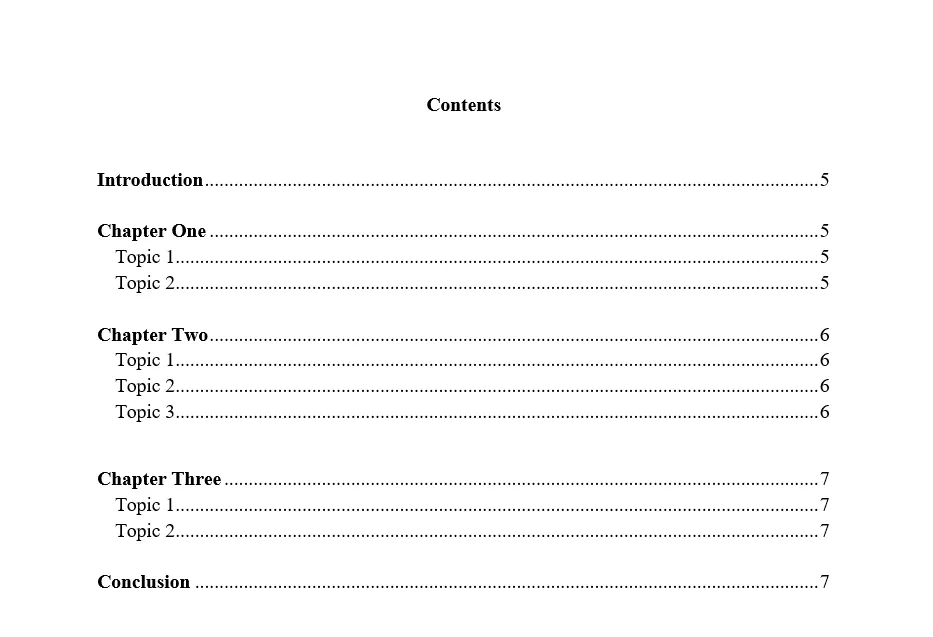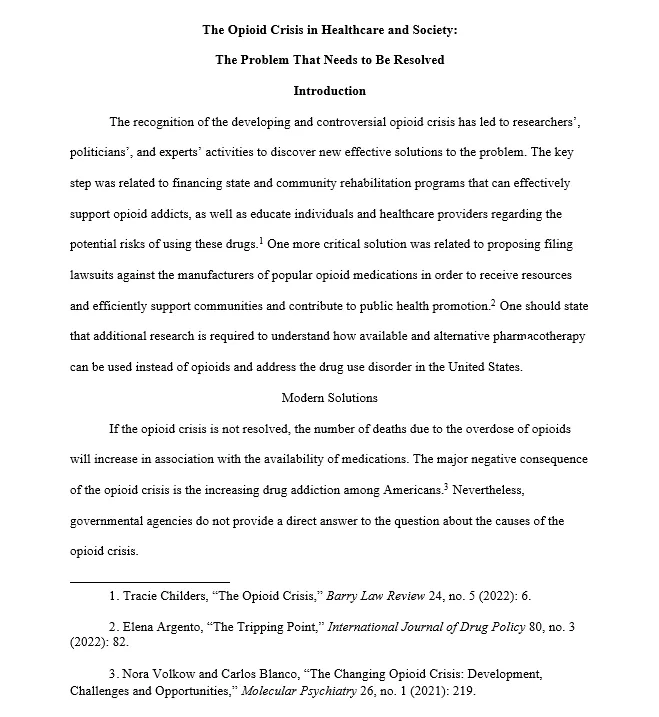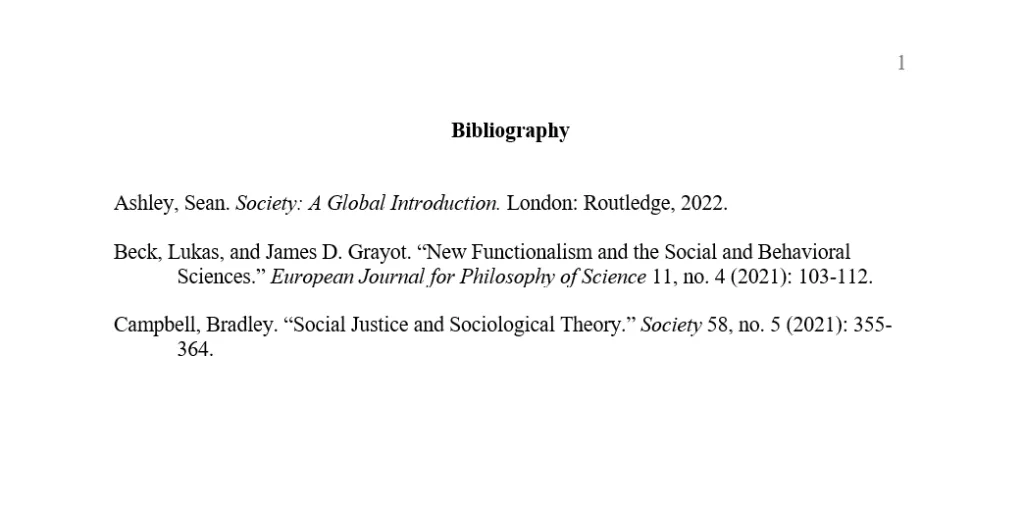Turabian (Notes-Bibliography) Citation Style Guide (9th ed.)
This piece of content has been developed by IvyPanda's editorial team.
No AI was involved in the creation process; only qualified experts contributed.
The information, facts, and sources presented in the text have been carefully checked and verified.
You are free to use it with proper referencing.
The Turabian style manual is a version of The Chicago Manual of Style that is appropriate to be used by students. The author of this citation style adapted both variants of The Chicago Manual of Style (Author-Date and Notes-Bibliography) to address the needs of students who require to write multiple papers during their college life. As a result, the Turabian style is shorter and less complicated than the Chicago style. This guide, written by experienced professionals who have worked with many formats, is here to help you understand and use Turabian (Notes-Bibliography) correctly.
This guide is developed in line with Turabian, Kate L. A Manual for Writers of Research Papers, Theses, and Dissertations: Chicago Style for Students and Researchers. 9th ed. Chicago: University of Chicago Press, 2018.
- What is Turabian Citation Style?
- The Importance of Citing and Referencing
- General Principles of Turabian Style Formatting
- Turabian Book Citation
- Turabian Article Citation
- Turabian Dissertation and Thesis Citation
- Turabian Lecture Citation
- Turabian Website Citation
- Tables and Figures in Turabian NB Style
What is Turabian Citation Style?
The Turabian Notes-Bibliography style is actively used by students. Thus, a detailed reference to the source provided in a footnote at the bottom of the page is usually helpful when it is necessary to quickly consult the chosen academic sources. Still, this format also has an Author-Date version that seems to be similar to APA or Harvard because of accentuating the authors’ names and the date of publication in in-text citations.
The Importance of Citing and Referencing
Correct referencing is critical for school and college papers because it is required to prevent plagiarism. Furthermore:
- Students’ knowledge and experience usually do not allow them to refer to only their own views and ideas while writing research papers and essays. Referring to scholars’ papers is a requirement in academic settings, and it is important to do this effectively and correctly.
- Schools, colleges, and universities forbid plagiarism. Effective referencing and citing are important steps in preventing plagiarism and emphasizing the academic quality of a student’s research paper.
- Students need to ensure that their cited data come from credible, reliable, and unbiased sources. In this context, the use of trustworthy peer-reviewed journal articles is generally expected.
- References should be formatted correctly, following the principles of certain citation styles, and links (if used) must be working.
General Principles of Turabian Style Formatting
- Set 1″ (2.54 cm) margins on all sides.
- Use Times New Roman 12 pt. font (unless your instructor says otherwise).
- All words except for articles and prepositions should be capitalized in book, article, and periodical titles.
- A list of the sources cited in the paper according to the Turabian NB style should appear in a separate section at the end of the paper that is titled Bibliography.
- Bibliographical entries are single-spaced, separated by an additional line space.
Turabian Title Page
- The title of the paper should be placed in the center of the page and written in bold. A colon is used to separate the main title from the subtitle. The subtitle is written below the title.
- The student’s name, course number and title, and date should be written in the lower part of the page.
- Page numbers are not used on the title page and on the table of contents/outline page.

Turabian (Notes-Bibliography) Table of Contents
A table of contents is used in Turabian NB papers. This page should be labeled Contents. Leave two blank lines between the page title and the first item in the list. Items should be single-spaced, but do not forget to add a blank line after items indicating chapters or parts of the paper.

Turabian Headings and Subheadings
Level 1: Centered, Bold, Each Word is Capitalized
Level 2: Centered, Capitalized
Level 3: Flush Left, Bold, Capitalized
Level 4: Flush left, regular font, sentence case
Level 5: Placed at the beginning of the paragraph. Can be italicized or bold, sentence case. A period is used to separate the subheading and the rest of the text in the paragraph.
Turabian Footnotes
- A footnote should be created every time a source is used or mentioned.
- Footnotes appear at the bottom (footer) part of a page, written in a regular text or smaller font.
- A footnote should be indented (left margin).
- All succeeding lines of this footnote should be formatted flush left.
- Turabian footnotes are single-spaced and separated by an additional line space.
- The first footnote for the source should include all the information about the source.
- If the source is cited more than once, subsequent footnotes should include the last name of the author, a short title (if the original title consists of more than four words), and the number(s) of the cited page(s).
- Page numbers are required for citations.
1. First Name Last Name, Title of Book (Place of publication: Publisher, Year of publication), page number.
2. Last Name, Shortened Title of Book, page number.
Citing the same source as the preceding one, use a shortened form of the citation. The title of the work may also be omitted if the previous note includes the title.
1. Smith, “History of Liberalism,” 28-29.
2. Smith, 35.

Turabian Bibliography
Bibliography should be provided at the end of the paper to ensure that any source used is included in the bibliography section and appropriately cited in the text.
- Label this page listing all sources used Bibliography (in bold, centered).
- Add two blank lines after the title of this page.
- Entries are single-spaced, and a blank line is added after each entry.
- Indent all lines after the first line in the entry (hanging indent, 1.27 cm).
- Invert authors’ names: Last Name, First Name (e.g., Smith, John).
- Alphabetize a list of sources.
- Make sure to capitalize all words except for articles and prepositions.
- Italicization is applied to books’ and periodicals’ titles.
- Double quotation marks are used for the titles of articles and book chapters.

Turabian Book Citation
Single author
Bibliography:
Last Name, First Name. Title of Book. Place of publication: Publisher, Year of publication.
Krahé, Barbara. The Social Psychology of Aggression. New York: Routledge, 2020.
Footnote citation:
1. First Name Last Name, Title of Book (Place of publication: Publisher, Year of publication), page number.
1. Barbara Krahé, The Social Psychology of Aggression (New York: Routledge, 2020), 29.
Two or three authors
Bibliography:
Last Name, First Name, First Name Last Name, and First Name Last Name. Title of Book. Place of publication: Publisher, Year of publication.
Byrne, David, and Gillian Callaghan. Complexity Theory and the Social Sciences: The State of the Art. London: Routledge, 2022.
Footnote citation:
1. First Name Last Name, First Name Last Name, and First Name Last Name, Title of Book (Place of publication: Publisher, Year of publication), page number.
1. David Byrne and Gillian Callaghan, Complexity Theory and the Social Sciences: The State of the Art (London: Routledge, 2022), 12-18.
Four or more authors
Bibliography:
Last Name, First Name, First Name Last Name, First Name Last Name, and First Name Last Name. Title of Book. Place of publication: Publisher, Year of publication.
Mason, Diana J., Adrianna Perez, Monica R. McLemore, and Elizabeth Dickson. Policy & Politics in Nursing and Health Care. New York: Elsevier Health Sciences, 2021.
Footnote citation:
1. First Name Last Name et al., Title of Book (Place of publication: Publisher, Year of publication), page number.
1. Diana J. Mason et al., Policy & Politics in Nursing and Health Care (New York: Elsevier Health Sciences, 2021), 54-55.
No author
Bibliography:
Title of Book. Place of publication: Publisher, Year of publication.
Mythology: Myths, Legends and Fantasies. Croydon: Aurora Metro Books, 2023.
Footnote citation:
1. Title of Book (Place of publication: Publisher, Year of publication), page number.
1. Mythology: Myths, Legends and Fantasies (Croydon: Aurora Metro Books, 2023), 67-69.
Multiple works by the same author
Fromm, Erich. The Anatomy of Human Destructiveness. Harmondsworth: Penguin Books, 2021.
—. The Fear of Freedom. London: Routledge & Kegan Paul, 2023.
Footnote citation:
1. Erich Fromm, The Fear of Freedom (London: Routledge & Kegan Paul, 2023), 33.
2. Erich Fromm, The Anatomy of Human Destructiveness (Harmondsworth: Penguin Books, 2021), 42.
Different editions
Bibliography:
Last Name, First Name, and First Name Last Name. Title of Book. # ed. Place of publication: Publisher, Year of publication.
Jones, Phil. The Arts Therapies: A Revolution in Healthcare. 2nd ed. New York: Routledge, 2020.
Footnote citation:
1. First Name Last Name and First Name Last Name, Title of Book, # ed. (Place of publication: Publisher, Year of publication), page number.
1. Phil Jones, The Arts Therapies: A Revolution in Healthcare, 2nd ed. (New York: Routledge, 2020), 124.
Editor or translator instead of author
Bibliography:
Editor’s Last Name, First Name, ed. Title of Book. Place of publication: Publisher, Year of publication.
Helms, Marilyn M., ed. Encyclopedia of Management. 5th ed. Farmington Hills: Thomson, 2021.
Footnote citation:
1. Editor’s First Name Last Name, ed., Title of Book (Place of publication: Publisher, Year of publication), page number.
1. Marilyn M. Helms, ed., Encyclopedia of Management, 5th ed. (Farmington Hills: Thomson, 2021), 202.
In a case with a translator, use trans. instead of ed.
Authors plus editors or translators
Bibliography:
Last Name, First Name, and First Name Last Name. Title of Book. Edited by Editor’s First Name Last Name. Place of publication: Publisher, Year of publication.
Burns, Paul. Entrepreneurship and Small Business. Edited by Isabelle Cheng. London: Bloomsbury Publishing, 2022.
Footnote citation:
1. First Name Last Name, Title of Book, ed. Editor’s First Name Last Name (Place of publication: Publisher, Year of publication), page number.
1. Paul Burns, Entrepreneurship and Small Business, ed. Isabelle Cheng (London: Bloomsbury Publishing, 2022), 112-114.
Use phrases edited by (ed.), compiled by (comp.) or translated by (trans.).
Corporate author
Bibliography:
Organization Name. Title of Book. Place of publication: Publisher, Year of publication.
World Health Organization. Global Oral Health Status Report: Towards Universal Health Coverage for Oral Health by 2030. Paris: WHO Publishing, 2022.
Footnote citation:
1. Organization Name, Title of Book (Place of publication: Publisher, Year of publication), page number.
1. World Health Organization, Global Oral Health Status Report: Towards Universal Health Coverage for Oral Health by 2030 (Paris: WHO Publishing, 2022), 135.
Encyclopedia or dictionary
If there is a need to cite the encyclopedia multiple times on the same page, use s.vv. instead of s.v., and cite all the words after (sub verbo, “under the word”; pl. s.vv.).
Bibliography:
Title of Encyclopedia. # ed. s.v. “Chapter Title”. Accessed Month Date, Year. URL.
Encyclopaedia Britannica Online. 15th ed. s.v. “Astronomy.” Accessed April 4, 2024. http://academic.eb.com/EBchecked/topic/6005638/Astronomy.
Footnote citation:
1. Title of Encyclopedia, # ed., s.v. “Chapter Title,” accessed Month Date, Year, URL.
1. Encyclopaedia Britannica Online, 15th ed., s.v. “Astronomy,” accessed April 4, 2024, http://academic.eb.com/EBchecked/topic/6005638/Astronomy.
Chapter in an edited book
Bibliography:
Author’s Last Name, First Name. “Chapter Title.” In Title of Book, edited by Editor’s First Name Last Name, pages. Place of publication: Publisher, Year of publication.
Higgs, Malcolm. “Change and Its Leadership: The Role of Positive Emotions.” In The Oxford Handbook of Positive Psychology and Work, edited by P. Alex Linley, Susan Harrington, and Nicola Garcea, 67–94. New York: Oxford University Press, 2023.
Footnote citation:
1. Author’s First Name Last Name, “Chapter Title,” in Title of Book, ed. Editor’s First Name Last Name (Place of publication: Publisher, Year of publication), page number.
1. Malcolm Higgs, “Change and Its Leadership: The Role of Positive Emotions,” in The Oxford Handbook of Positive Psychology and Work, ed. P. Alex Linley, Susan Harrington, and Nicola Garcea (New York: Oxford University Press, 2023), 67–72.
Chapter in a single-author book
Bibliography:
Author’s Last Name, First Name. “Chapter Title.” In Book Title, pages. Place of publication: Publisher, Year of publication.
Anderson, Michael Alan. “Antiphons.” In Music and Performance in the Book of Hours, 20-31. London: Taylor & Francis, 2022.
Footnote citation:
1. Author’s First Name Last Name, “Chapter Title”, in Title of Book (Place of publication: Publisher, Year of publication), page number.
1. Michael Alan Anderson, “Antiphons,” in Music and Performance in the Book of Hours (London: Taylor & Francis, 2022), 23-24.
E-book
Bibliography:
Last Name, First Name. Title of Book. Place of publication: Publisher, Year of publication. Medium/E-Library/URL.
Barry, Florence V. A Century of Children’s Books. New York: Good Press, 2023. iBooks.
Borel, Brooke. The Chicago Guide to Fact-Checking. Chicago: University of Chicago Press, 2024. ProQuest Ebrary.
Chan, Mimi. All the King’s Women. Hong Kong: Hong Kong University Press, 2024. EPUB.
Melville, Herman. Moby-Dick; or, The Whale. New York: Harper & Brothers, 1851. http://mel.hofstra.edu/moby-dick-the-whale-proofs.html.
Footnote citation:
First Name Last Name, Title of Book (Place of publication: Publisher, Year of publication), chap. #/page, Medium/E-Library/URL.
1. Florence V. Barry, A Century of Children’s Books (New York: Good Press, 2023), chap. 2, iBooks.
2. Mimi Chan, All the King’s Women (Hong Kong: Hong Kong University Press, 2024), chap. 4, EPUB.
3. Brooke Borel, The Chicago Guide to Fact-Checking (Chicago: University of Chicago Press, 2024), 92, ProQuest Ebrary.
4. Herman Melville, Moby-Dick; or, The Whale (New York: Harper & Brothers, 1851), 627, http://mel.hofstra.edu/moby-dick-the-whale-proofs.html.
- Add the format of the document (e.g., PDF, EPUB, Kindle, Microsoft Reader, Dejavu) or the library/source (e.g., ProQuest Ebrary, URL).
- Pages in electronic versions of a book may differ or be absent. Mention chapters or sections.
Book consulted online
Bibliography:
Last Name, First Name. Title of Book. Place of publication: Publisher, Year of publication. DOI/URL.
Antokoletz, Elliot. Musical Symbolism in the Operas of Debussy and Bartók. New York: Oxford University Press, 2024. https://doi.org/10.1093/acprof:oso/9780195365825.001.0001.
Footnote citation:
1. First Name Last Name, Title of Book (Place of publication: Publisher, Year of publication), DOI/URL.
1. Elliot Antokoletz, Musical Symbolism in the Operas of Debussy and Bartók (New York: Oxford University Press, 2024), https://doi.org/10.1093/acprof:oso/9780195365825.001.0001.
Preface, foreword, afterword, or introduction
Bibliography:
Last Name, First Name. Preface / Foreword / Afterword / Introduction to Title of Book, by/edited by Editor’s First Name Last Name, pages. Place of publication: Publisher, Year of publication.
Gay, Ross. Foreword to The Book of Light, by Lucille Clifton, i-iv. Washington: Copper Canyon Press, 2023.
Footnote citation:
1. First Name Last Name, preface / foreword / afterword / introduction to Title of Book, by/ed. Editor’s First Name Last Name (Place of publication: Publisher, Year of publication), page.
1. Ross Gay, foreword to The Book of Light, by Lucille Clifton (Washington: Copper Canyon Press, 2023), ii.
Turabian Article Citation
Journal article
Bibliography:
Last Name, First Name. “Article Title.” Title of Periodical volume, no. # (Year): pages.
Syed, Fatima Z. “Type 1 Diabetes Mellitus.” Annals of Internal Medicine 175, no. 3 (2022): 33-48.
Footnote citation:
1. First Name Last Name, “Article Title,” Title of Periodical volume, no. # (Year): page.
1. Fatima Z. Syed, “Type 1 Diabetes Mellitus,” Annals of Internal Medicine 175, no. 3 (2022): 35-36.
Bibliography:
When only an issue is known, a comma follows the journal title.
Ali, Imran, and Omar ML Alharbi. “COVID-19: Disease, Management, Treatment, and Social Impact.” Science of the Total Environment, no. 728 (2020): 4-18.
Add a month/season when it is known: (Winter 2022), (September 2024).
Nguyen, Minh-Hoang, Tam-Tri Le, and Quan-Hoang Vuong. “Ecomindsponge: A Novel Perspective on Human Psychology and Behavior in the Ecosystem.” Urban Science 7, no. 1 (February 2023): 31-34.
Journal articles with more than four authors
If there are four or more authors, list up to ten authors in the bibliographical entry. In notes, list only the first author, followed by “et al.” (“and others”).
Bibliography:
Last Name, First Name, First Name Last Name, First Name Last Name, First Name Last Name, First Name Last Name, First Name Last Name, First Name Last Name, First Name Last Name, First Name Last Name, and First Name Last Name. “Article Title.” Title of Periodical volume, no. # (Year): pages.
Last Name, First Name, First Name Last Name, First Name Last Name, First Name Last Name, First Name Last Name, First Name Last Name, First Name Last Name, et al. “Article Title.” Title of Periodical volume, no. # (Year): pages.
Wang, Ge, Andreu Badal, Xun Jia, Jonathan S. Maltz, Klaus Mueller, Kyle J. Myers, Chuang Niu. “Development of Metaverse for Intelligent Healthcare.” Nature Machine Intelligence 4, no. 11 (2022): 922-929.
Footnote citation:
1. First Name Last Name et al., “Article Title,” Title of Periodical volume, no. # (Year): page.
1. Ge Wang et al., “Development of Metaverse for Intelligent Healthcare,” Nature Machine Intelligence 4, no. 11 (2022): 923.
Journal article (no author)
Bibliography:
“Article Title.” Title of Periodical volume, no. # (Year): pages.
“Teacher Certification and Teacher Commitment.” International Journal of Scientific Research and Management 5, no. 11 (2023): 35–45.
Footnote citation:
1. “Article Title,” Title of Periodical volume, no. # (Year): page.
1. “Teacher Certification and Teacher Commitment,” International Journal of Scientific Research and Management 5, no. 11 (2023): 37.
Newspaper article
Bibliography:
Last Name, First Namel. “Article Title.” Title of Periodical, Month Date, Year.
Davidson, Jared. “Obesity Epidemics.” The Washington Post, June 8, 2023.
Footnote citation:
1. First Name Last Name, “Article Title,” Title of Periodical, Month Date, Year, page.
1. Jared Davidson, “Obesity Epidemics,” The Washington Post, June 8, 2023, 2
Newspaper article (no author)
Bibliography:
Title of Periodical. “Article Title.” Month Date, Year.
Chicago Tribune. “Discussing the Obesity Problem.” August 5, 2023.
Footnote citation:
1. “Article Title,” Title of Periodical, Month Date, Year, page.
1. “Discussing the Obesity Problem,” Chicago Tribune, August 5, 2023, 6.
Journal article with DOI
Bibliography:
Last Name, First Name. “Article Title.” Title of Periodical volume, no. # (Year): pages. DOI.
Hammad, Hamida, and Bart N. Lambrecht. “The Basic Immunology of Asthma.” Cell 184, no. 6 (March 2021): 1469-1485. https://doi.org/10.1016/j.cell.2021.02.016.
Footnote citation:
1. First Name Last Name, “Article Title,” Title of Periodical volume, no. # (Year): page, DOI.
1. Hamida Hammad and Bart N. Lambrecht, “The Basic Immunology of Asthma,” Cell 184, no. 6 (March 2021): 1470, https://doi.org/10.1016/j.cell.2021.02.016.
Journal article from a database
Bibliography:
Last Name, First Name. “Article Title.” Title of Periodical volume, no. # (Year): pages. DOI/URL/Database.
Brennan, Virginia. “Living History.” Journal of Health Care for the Poor and Underserved 34, no. 1 (2023): ix-x. Project MUSE.
Haas, Barbara. “Liquid History.” World Literature Today 94, no. 4 (Autumn 2020): 38-43. https://www.jstor.org/stable/10.7588/worllitetoda.94.4.0038.
Footnote citation:
1. First Name Last Name, “Article Title,” Title of Periodical volume, no. # (Year): page, DOI/URL/Database.
1. Virginia Brennan, “Living History,” Journal of Health Care for the Poor and Underserved 34, no. 1 (2023): ix, Project MUSE.
2. Barbara Haas, “Liquid History,” World Literature Today 94, no. 4 (Autumn 2020): 41, https://www.jstor.org/stable/10.7588/worllitetoda.94.4.0038.
Online newspaper article
Bibliography:
Last Name, First Name. “Article Title.” Title of Periodical, Month Date, Year. URL/E-Library.
Chavkin, Sasha, Caitlin Gilbert, Anjali Tsui, and Anahad O’Connor. “As Obesity Rises, Big Food and Dietitians Push ‘Anti-Diet’ Advice.” The Washington Post, April 3, 2024. https://www.washingtonpost.com/wellness/2024/04/03/diet-culture-nutrition-influencers-general-mills-processed-food/.
Footnote citation:
1. First Name Last Name, “Article Title,” Title of Periodical, Month Date, Year, URL/E-Library.
1. Sasha Chavkin et al., “As Obesity Rises, Big Food and Dietitians Push ‘Anti-Diet’ Advice,” The Washington Post, April 3, 2024, https://www.washingtonpost.com/wellness/2024/04/03/diet-culture-nutrition-influencers-general-mills-processed-food/.
Turabian Dissertation and Thesis Citation
Thesis or dissertation
Bibliography:
Last Name, First Name. “Dissertation Title.” Degree statement., University, Year.
Stern, Debra. “Forty Acres and a School: How Black Charter School Founders Can Disrupt the Impact of Segregation on Black Children.” PhD diss., American University, 2024.
Footnote citation:
1. First Name Last Name, “Dissertation Title” (Degree statement., University, Year), page.
1. Debra Stern, “Forty Acres and a School: How Black Charter School Founders Can Disrupt the Impact of Segregation on Black Children” (PhD diss., American University, 2024), 28-31.
Turabian Lecture Citation
Course materials
Bibliography:
Last Name, First Name. “Lecture Title.” Lecture, University, Place, Month Date, Year.
Jackson, Sean. “The Basics of Cloud Computing.” Lecture, the University of Virginia, Charlottesville, October 10, 2023.
Footnote citation:
1. First Name Last Name, “Lecture Title” (lecture, University, Place, Month Date, Year).
1. Sean Jackson, “The Basics of Cloud Computing” (lecture, the University of Virginia, Charlottesville, October 10, 2023).
Turabian Website Citation
Website
Bibliography:
Organization. “Page Title.” Website Title. Last modified Month Date, Year/Accessed Month Date, Year URL.
Energy Systems. “Home Page.” Energy Systems Corp. Accessed April 18, 2024. http://www.energysystemscorp.com.
Footnote citation:
1. “Page Title,” Website Title (website), Organization, last modified Month Date, Year/accessed Month Date, Year, URL.
1. “Home Page,” Energy Systems, accessed April 18, 2024, http://www.energysystemscorp.com.
- If the organization name and website name are the same, use the organization name.
- Add the date of access or the date of last modification.
Web page (no date)
Bibliography:
Last Name, First Name. “Page Title.” Website Title. Accessed Month Date, Year. URL.
Carpenter, John. “Alternative Cancer Treatments for Stage I, II and III Cancer Patients.” Cancer Tutor. Accessed January 25, 2024. https://www.cancertutor.com/ruleofthumb/.
Footnote citation:
1. First Name Last Name, “Page Title,” Website Title, accessed Month Date, Year, URL.
1. John Carpenter, “Alternative Cancer Treatments for Stage I, II and III Cancer Patients,” Cancer Tutor, accessed January 25, 2024, https://www.cancertutor.com/ruleofthumb/.
Blog
Bibliography:
Last Name, First Name. “Blog Post Title.” Website Title (blog), Month Date, Year. URL.
Mosunic, Chris. “Why Is Anxiety More Common in Women? Plus, 8 Tips to Cope.” Calm (blog), March 25, 2024. https://www.calm.com/blog/women-anxiety.
Footnote citation:
1. First Name Last Name, “Blog Post Title,” Website Title (blog), Month Date, Year, URL.
1. Chris Mosunic, “Why Is Anxiety More Common in Women? Plus, 8 Tips to Cope,” Calm (blog), March 25, 2024, https://www.calm.com/blog/women-anxiety.
Films and video recordings
Bibliography:
Last Name, First Name, director. Film Title. Distribution Company, Year. Duration. URL.
Fabian, Anthony, director. Mrs. Harris Goes to Paris. Focus Features, 2022. 1 hr., 50 min. https://www.netflix.com/watch/8900015.
Footnote citation:
1. Film Title, directed by First Name Last Name (Distribution Company, Year), URL.
1. Mrs. Harris Goes to Paris, directed by Anthony Fabian (Focus Features, 2022), https://www.netflix.com/watch/8900015.
YouTube video
Bibliography:
Last Name, First Name/Author. “Video Title.” Month Date, Year. YouTube video, Length. URL.
Accounting Stuff. “Learn Accounting in Under 5 Hours.” September 20, 2021. YouTube video, 4:50:58. https://www.youtube.com/watch?v=gPBhGkBN30s.
Footnote citation:
1. Last Name, First Name/Author, “Video Title,” Month Date, Year, YouTube video, Length, URL.
1. Accounting Stuff, “Learn Accounting in Under 5 Hours,” September 20, 2021, YouTube video, 4:50:58, https://www.youtube.com/watch?v=gPBhGkBN30s.
Personal communication
Footnote citation:
1. First Name Last Name, e-mail message, Month Date, Year.
1. Jared Smith, e-mail message, July 4, 2023.
Tables and Figures in Turabian NB Style
Provide figures and tables in the body of a paper after the text that discusses this object. Introduce a figure to a reader by adding a detailed caption with all the information about the figure and its source. Both figures and tables should be numbered. For tables, insert a table number and a title above the object and add “Source:” with detailed information about the table source below it.
Example:

Figure 1. Glass World, EnvironmentalScience, accessed August 18, 2024,
https://www.environmentalscience.org/wp-content/uploads/2016/09/NEPA-CEQA-640×425.jpeg.